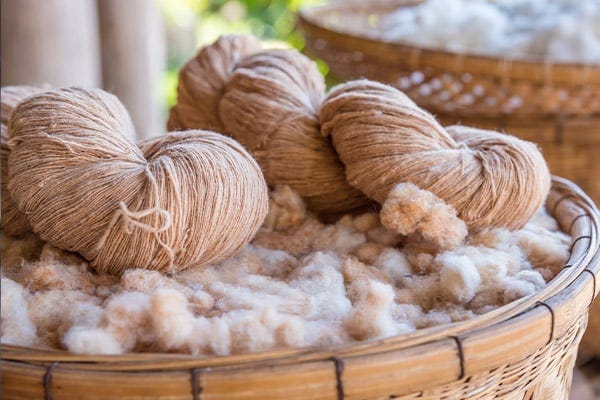Nature's Comeback: Functional natural materials in technical textiles

In an era marked by environmental concerns and a growing preference for sustainable choices, technical textiles segment is witnessing interest resurgence in functional natural materials. Once relegated to the sidelines by synthetic counterparts, natural fibers and materials are now being re-evaluated for their potential to offer performance, sustainability, and innovation across various applications.
Market size and growth
Various industry reports suggest, the global technical textiles market was valued at around $215 billion in 2022. It is projected to move ahead at a steady compound annual growth rate (CAGR) of 6.85 per cent, reaching an estimated $360 billion by 2030. The 6.85 CAGR signifies robust growth, driven by growing demands across diverse industries. Though a precise share for natural materials remains elusive, increasing sustainability concerns suggest strong growth potential within the coming decade.
Natural vs. synthetic, a shifting landscape
While synthetic materials have long dominated technical textiles due to their performance characteristics, natural materials are steadily gaining ground.
Natural materials are becoming popular due to their biodegradability, renewability, and reduced environmental impact, are core advantages. Natural fibers like cotton, wool, silk, and hemp offer inherent properties like moisture management, breathability, and comfort, making them ideal for applications demanding skin-friendly contact.
However, on the down side, traditionally, natural materials were perceived as less durable and resistant to harsh conditions compared to synthetics. Now, innovations in processing and blending techniques are addressing these limitations, paving the way for wider applications. Moreover, natural fibers an be more expensive to produce and process and supply may fluctuate depending on agricultural conditions.
Over the years, the use of functional natural materials is growing into a diverse range of technical textile applications.
Protective clothing: Fire-resistant and anti-static treatments for natural fibers are making them suitable for protective gear for firefighters, industrial workers, and military personnel.
Medical textiles: Biocompatible and hypoallergenic properties of certain natural materials are being leveraged in wound dressings, surgical sutures, and implantable textiles.
Geotextiles: Biodegradable natural fibers like jute and coir are used in erosion control, soil stabilization, and landscaping projects, minimizing environmental impact.
Automotive textiles: Natural fiber composites are being explored for interior applications like door panels and dashboards, reducing vehicle weight and improving fuel efficiency.
Sports and performance wear: Moisture-wicking and breathable natural materials are incorporated into activewear, providing comfort and enhancing performance.
Global initiatives and regional strengths
Numerous initiatives across the globe are promoting the adoption of functional natural materials in technical textiles. Institutions and companies are investing in R&D to overcome limitations and enhance the performance of natural materials. And eco-labels and certifications are encouraging the use of sustainably sourced and processed natural fibers. Then there are partnerships between material suppliers, textile manufacturers, and end-users that are also driving innovation and market adoption.
Regionwise, stringent environmental regulations and a focus on sustainability have made Europe a frontrunner in developing and using natural materials in technical textiles. Meanwhile, abundance of natural resources and a growing textile industry make the Asia-Pacific region a key player in the adoption of sustainable solutions. As for North America, research institutions and innovative startups are driving the development of advanced natural materials with enhanced functionality.
The journey of functional natural materials in technical textiles is one of rediscovery and reinvention. With innovations and collaborations, natural fibers and materials are poised to play an increasingly significant role in the future of technical textiles, offering sustainable solutions without compromising performance.
While not a complete replacement for synthetics, natural materials are emerging as valuable alternatives in applications where their inherent properties and environmental benefits can be leveraged. As the world embraces sustainable practices, the synergy between nature and technology will continue to redefine the landscape of technical textiles, opening new possibilities for innovation and growth.
